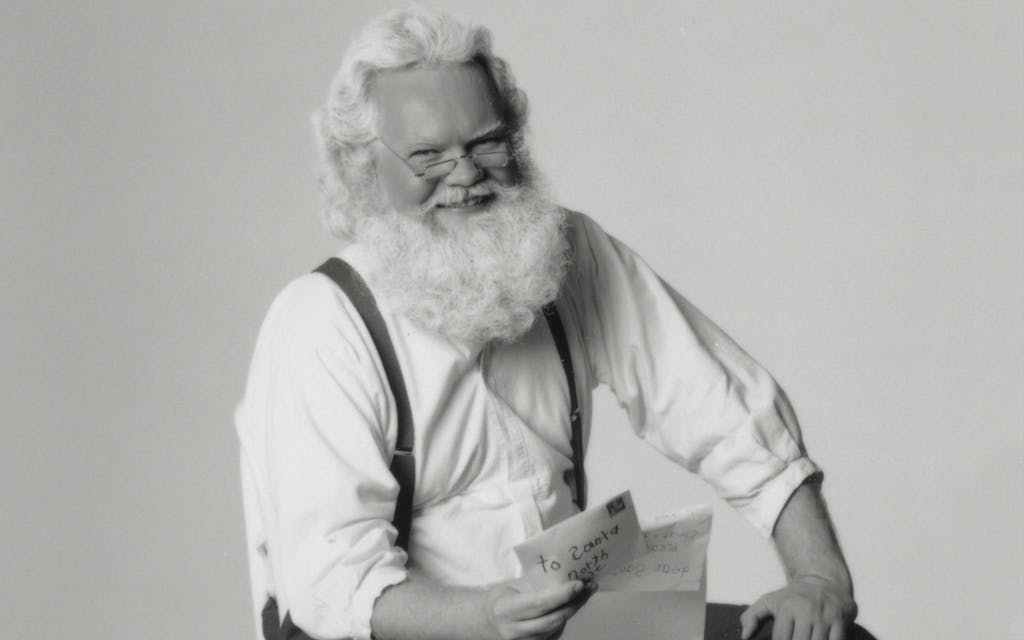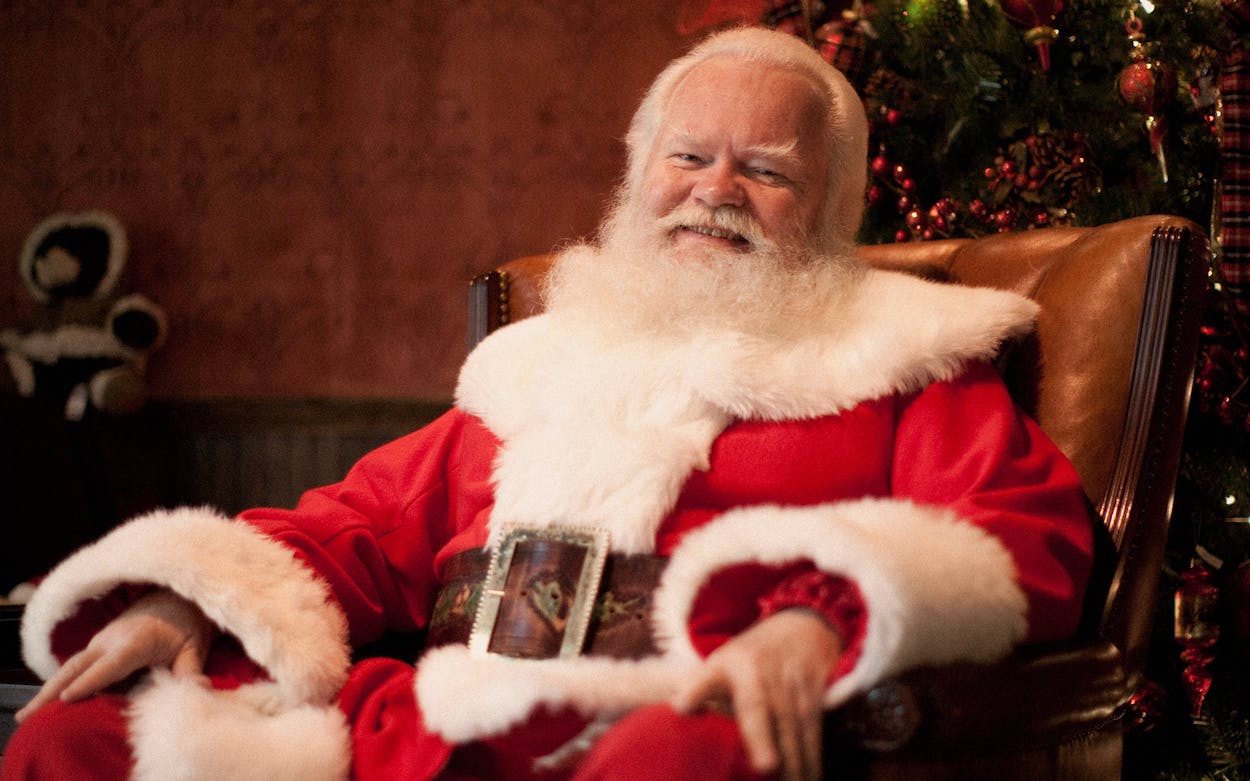Santa Claus says he’s heard it all in the three decades that he’s been coming to Dallas’s NorthPark Center. Since 1988, kids have waited in line, sometimes for hours, to enter the life-size cottage, which the mall staff had set up to make the big man feel at home from Thanksgiving through Christmas Eve, and whisper their wishes to him. In Christmases past, he fielded requests for Teenage Mutant Ninja Turtles, cuddly Tickle Me Elmos, and sleek Razor scooters. Tamagotchis, those digital pets that were the rage in the late nineties, were child’s play compared with the elaborate interactive toys he’s asked for these days.
Visiting Santa at NorthPark, a local institution, has become a family tradition for many. Some Texans who were wee things when he first made an appearance there are now parents and bring their own little ones to see him. He calls them second generationers. But last year, because of COVID-19, Santa Claus held only virtual visits; he’s doing the same this year. Parents can sign up online for a five-minute session for their kids with a $25 or $50 donation that goes to Children’s Health (Santa raised $130,000 for the nonprofit in 2020).

Santa, who is known as psychologist Carl Anderson the other eleven months of the year, was able to spare a few minutes during this hectic season to talk with us about his annual visits to Texas, what kids are asking for, and whether he misses the in-person visits at NorthPark.
Texas Monthly: Hi, Santa! We appreciate you taking the time out of your busy schedule. We need to start with the most important question. Is your beard real?
Santa Claus: Well, of course it’s real!
TM: What drew you to NorthPark Center that first Christmas 33 years ago?
SC: They invited me to come for a visit, and I spent a day looking around NorthPark. They wanted Santa visits that would become a tradition, like a gift to the community. I now have families in which I saw the parents as kids—now they’re bringing their kids. At Christmas, they have on the mantel all the pictures of me and the children lined up. I usually joke with them and say, “If you look at the picture, you’ll see that you get older and I stay the same age.” Some will bring pictures of themselves as children, and they’ll try to recreate it by putting their kids in the same position that they were in in the picture.
TM: Toys have changed a lot since the late eighties. What are your most popular requests these days?
SC: The biggest change has been the technology: the video games, the Xbox, and Nintendo Switch, all of which are popular and very much asked for. Sometimes even young children ask for iPads, even little bitty ones who can barely say the word. On the other hand, one request that has lasted year after year and has, in fact, increased, is Legos. I do still hear about Barbie, but not so much her accessories, like the Dream House. I hear a lot more about the Disney princesses; for some reason, I’ve had a lot of requests for Moana this year. Some kids even want makeup and jewelry, which, of course, I refer to Mrs. Claus on—they don’t want me to make those choices, not with my taste! And many still want things related to transportation: fire trucks, bulldozers, trains, and tractors.
TM: How does it feel doing the virtual visits with kids rather than chatting inside the cottage?
SC: Of course I miss them sitting on my lap, the hugs, the tugs on my beard. On the other hand, the virtual visits allow us to have more time together. Because in person, we’d often have the huge line and feel the pressure to keep things moving. Now I’ve got five minutes, but it’s usually more like seven, eight, even nine minutes sometimes. Sometimes the kids will grab the phone or whatever is broadcasting from their end and take it around and show me things. A lot of times when they pop up on the screen, they just immediately get so excited. I get to see their houses, trees, and things like that. I see the pets that I have to be aware of. We talk about them in their in-person visits, but now the dog is in the picture.
TM: Do you set up the camera and manage things yourself?
SC: No, my techno-elf is running it. Technology and I don’t get along very well.
TM: Is there a lot less crying with virtual visits?
SC: Yes, definitely. The primary age for the fear, or the “Santa shock” as I sometimes call it, is from two to four years old. With the virtual visits, they’re in their home, Mom and Dad are right there, so they feel safer. They get very shy, still, but there’s far less crying.
TM: What do you do when the Christmas season is over, and you don’t have to deliver presents for another 364 days?
SC: Well, I’m a psychologist. There are some reports out there that make a mistake and say I’m a child psychologist—I think they assume that because I’m working with kids during Christmas. I’m a counseling psychologist. I did my dissertation on children and Santa Claus.
TM: Wow! You are full of surprises, Santa. Before we let you get to your next virtual visit, let’s settle a big debate. What should our readers leave for your reindeer on Christmas Eve? We’ve heard of carrots, oats, and sugar cubes.
SC: Rudolph has a sweet tooth, so he likes candy canes. For some reason, he thinks the curved part at the top tastes better than the rest. So he’ll chomp down and bite that off. If they leave a candy cane out for him on Christmas Eve, when they get up in the morning, all that’s left is the straight stick part..
TM: And for you?
SC: Cookies for me. But I’ll eat anything they leave me. When in Texas, I like to eat nachos with jalapeños.
This interview was edited for clarity, length, and to keep us off Santa’s naughty list.
- More About:
- Dallas






